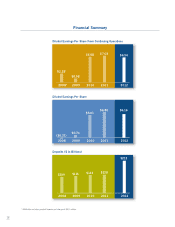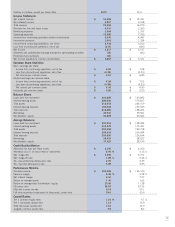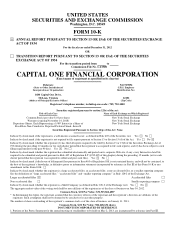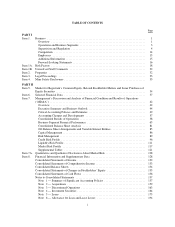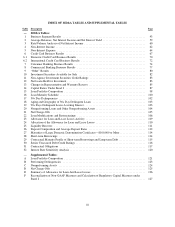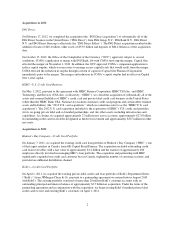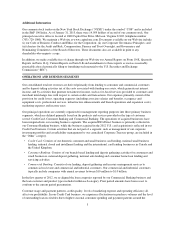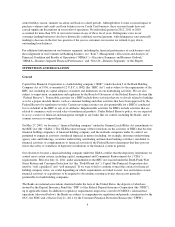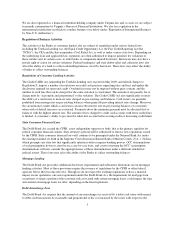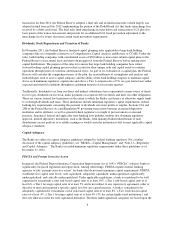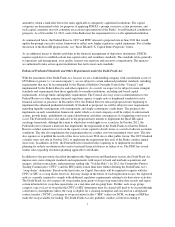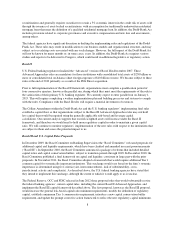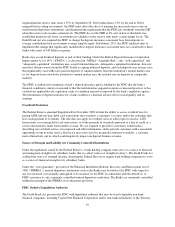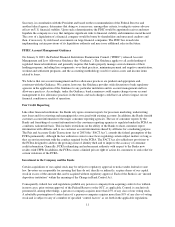Capital One 2012 Annual Report Download - page 22
Download and view the complete annual report
Please find page 22 of the 2012 Capital One annual report below. You can navigate through the pages in the report by either clicking on the pages listed below, or by using the keyword search tool below to find specific information within the annual report.
Additional Information
Our common stock trades on the New York Stock Exchange (“NYSE”) under the symbol “COF” and is included
in the S&P 100 Index. As of January 31, 2013, there were 14,059 holders of record of our common stock. Our
principal executive office is located at 1680 Capital One Drive, McLean, Virginia 22102 (telephone number
(703) 720-1000). We maintain a Web site at www.capitalone.com. Documents available on our Web site include:
(i) our Code of Business Conduct and Ethics for the Corporation; (ii) our Corporate Governance Principles; and
(iii) charters for the Audit and Risk, Compensation, Finance and Trust Oversight, and Governance and
Nominating Committees of the Board of Directors. These documents also are available in print to any
shareholder who requests a copy.
In addition, we make available free of charge through our Web site our Annual Reports on Form 10-K, Quarterly
Reports on Form 10-Q, Current Reports on Form 8-K and amendments to those reports as soon as reasonably
practicable after electronically filing or furnishing such material to the U.S. Securities and Exchange
Commission (“SEC”).
OPERATIONS AND BUSINESS SEGMENTS
Our consolidated total net revenues are derived primarily from lending to consumer and commercial customers
and by deposit-taking activities net of the costs associated with funding our assets, which generate net interest
income, and by activities that generate non-interest income, such as fee-based services provided to customers and
merchant interchange fees with respect to certain credit card transactions. Our expenses primarily consist of the
provision for credit losses, operating expenses (including associate salaries and benefits, occupancy and
equipment costs, professional services, infrastructure enhancements and branch operations and expansion costs),
marketing expenses and income taxes.
Our principal operations are currently organized for management reporting purposes into three primary business
segments, which are defined primarily based on the products and services provided or the type of customer
served: Credit Card, Consumer Banking and Commercial Banking. The operations of acquired businesses have
been integrated into our existing business segments. The acquired ING Direct business is primarily reflected in
our Consumer Banking business, while the business acquired in the 2012 U.S. card acquisition is reflected in our
Credit Card business. Certain activities that are not part of a segment, such as management of our corporate
investment portfolio and asset/liability management by our centralized Corporate Treasury group, are included in
the “Other” category.
•Credit Card: Consists of our domestic consumer and small business card lending, national small business
lending, national closed end installment lending and the international card lending businesses in Canada and
the United Kingdom.
•Consumer Banking: Consists of our branch-based lending and deposit gathering activities for consumers and
small businesses, national deposit gathering, national auto lending and consumer home loan lending and
servicing activities.
•Commercial Banking: Consists of our lending, deposit gathering and treasury management services to
commercial real estate and commercial and industrial customers. Our commercial and industrial customers
typically include companies with annual revenues between $10 million to $1.0 billion.
In the first quarter of 2012, we re-aligned the loan categories reported by our Commercial Banking business and
the loan customer and product types included within each category. Prior period amounts have been recast to
conform to the current period presentation.
Customer usage and payment patterns, credit quality, levels of marketing expense and operating efficiency all
affect our profitability. In our Credit Card business, we experience fluctuations in purchase volumes and the level
of outstanding loan receivables due to higher seasonal consumer spending and payment patterns around the
3



